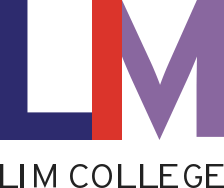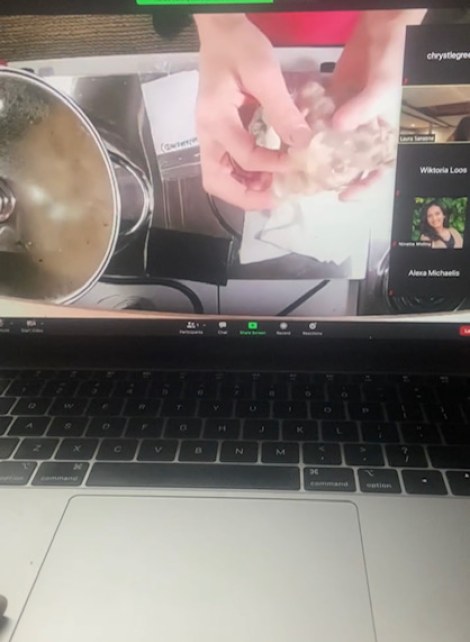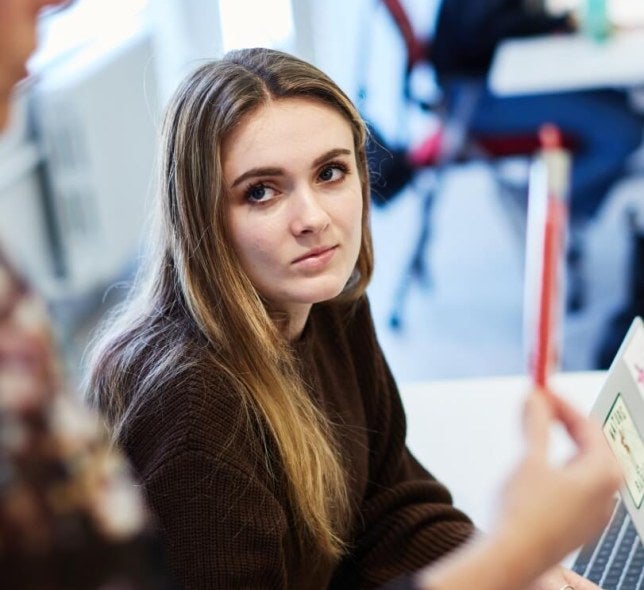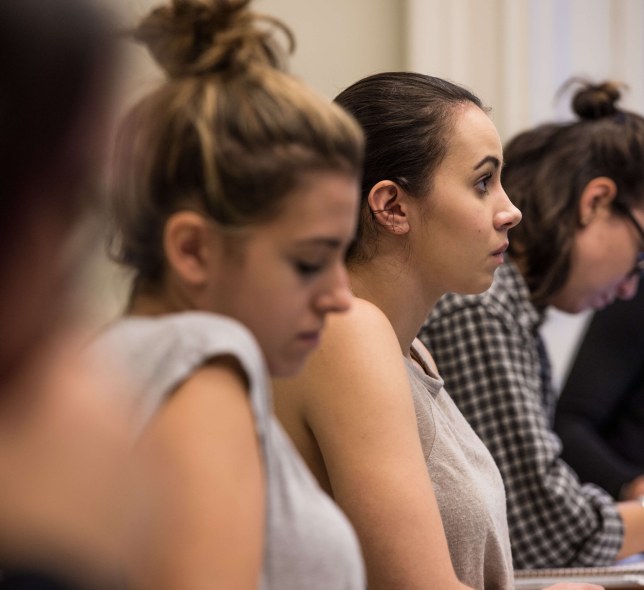This sustainable dyeing is all done using natural materials commonly found in the home and in nature. As someone who enjoys the behind-the-scenes of creative processes and learning new things, I could not miss this opportunity.
Laura Sansone is the creator of the NY Textile Lab, a small design and consulting company located along the Hudson River. Although the lab provides services to designers, Laura mentioned her company’s main mission is: “moving the designer to the beginning of the supply chain.” In other words, they are giving designers a direct connection to the farms producing their resources, where they can then trail the development of their fibers through the value chain leading to their finished product. With access to local farms, Laura can collect different protein fibers such as wool, which are utilized to source, produce, and weave bioregional textiles. All made to preserve the “health of natural systems and communities” and help restore natural resources rather than deplete them.
After hearing about her and the company’s background. Laura outlined the workshop, breaking it down into different segments:
• Discussion of Natural Dyes
• Documentation of Natural Dyes (Lab Dips)
• Equipment and Lab Protocols
• Making and Extraction of Dyes
• Preparation of Fibers and Types of Fibers
• The Changing of PH Levels
Laura proceeded with an explanation of natural dyes, the extraction of dye from natural sources, the preparation of fibers, and the changing of PH levels. She shared a glimpse of her beautifully dyed lap dips, all done using different types of regional plants, textiles, and fibers. It was inspiring to see how much dedication and creativity Laura puts into her career. She has used a diverse range of natural resources to naturally dye textiles and fibers. Some of these natural resources include marigolds, goldenrods, logwood, cochineal, etc. all of which helped her document and obtain beautifully colored lab dips. I found the whole natural dyeing process mesmerizing, particularly how she was able to achieve different colors from a single plant or insect, by simply shifting the PH level. To document our dye concoctions, she provided us with a very brief yet organized template called the urban dyers' almanac, which she follows as a way to help track her dye recipes.
To conclude my experience, Laura presented us with an overall in-depth workshop on the creative process of natural dyeing and the importance of natural fibers, better farming, sustainability, and our environment. I encourage other students to attend future workshops such as this one! Especially students who are interested in sustainability, textiles, fashion, and entrepreneurship. This experience helped me learn a new creative process I can implement into future projects. It has inspired me to explore the world of textiles and natural dyeing.
To connect with or learn more about Laura, bioregional textiles, the natural dying process, and information on future events visit NYTextileLab.com.



